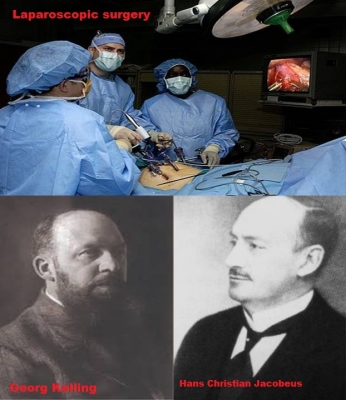
Laparoscopic surgery is also called ‘minimally invasive surgery’. It is a type of surgery that allows a surgeon to operate inside the abdominal or pelvic region without making large cuts or incisions in the skin of the patient. It is a low-risk procedure that involves the use of an instrument called the laparoscope. This is a long, thin tube with high intensity light and a high-resolution camera in the front which allows the surgeon to see images on a monitor without the risks of an open surgery.
The first laparoscopic experiments were carried by Georg Kelling, a German physician in 1901. He used a cytoscope (a narrow tube with lenses) to perform the procedure on the abdomen of a dog. The first human laparoscopic surgery was carried out in 1910 by Hans Christian Jacobaeus, a Swedish surgeon.
Jacobaeus was the first to recognize the diagnostic and therapeutic possibilities of laparoscopic surgery as well as its difficulties and limits. He encouraged the need for endoscopic training in animals and on corpses and promoted the development of special laparoscopic instruments to optimize and simplify the procedure.
The advent of the computer chip-based television camera was a key event in the field of laparoscopy. It allowed the doctor to perform the surgery while viewing a projected image on a screen. Laparoscopic surgery has several advantages over traditional surgery. It leaves only a tiny scar. There is less loss of blood, less risk of infection, less pain after surgery and a shorter hospital stay. Today remote surgeries and robotic surgeries are typical laparoscopic procedures.
Picture Credit : Google




